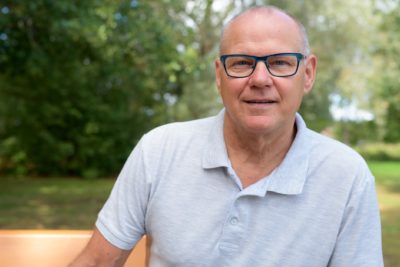As you age, hair loss becomes more probable and common. One of its more common causes is genetics – if your father and your father’s father experienced hair loss, chances are you will, too. But genetics paints only a partial picture. For many, hair loss is caused by dihydrotestosterone (or DHT), a hormone that plays a role in puberty and helps men develop their adult male characteristics. Too much or too little of this hormone can lead to issues, including hair loss.
common causes is genetics – if your father and your father’s father experienced hair loss, chances are you will, too. But genetics paints only a partial picture. For many, hair loss is caused by dihydrotestosterone (or DHT), a hormone that plays a role in puberty and helps men develop their adult male characteristics. Too much or too little of this hormone can lead to issues, including hair loss.
What Is DHT?
Dihydrotestosterone is a hormone made from testosterone and is present in both men and women, though men carry it in larger quantities. It’s responsible for masculine characteristics such as increased muscle mass, a deeper voice, and facial hair. While going through puberty, DHT is one of the primary forces between changes in men’s bodies. In adulthood the hormone can aid in maintaining fitness and sexual activity.
If one has too much DHT, however, it could contribute to an increased risk of prostate cancer and heart disease.
Hormone Imbalance and Hair Loss
While male pattern baldness is genetic, those who don’t have enough DHT are likely to suffer greater hair loss – even complete. Hair on the body grows from follicles tucked beneath the skin. An excess of DHT causes the follicles to shrink, making hair more prone to breakage, and increases the time it takes for hair to grow back.
DHT and Hair Loss in Women
Women typically have lower levels of DHT than men, but there is still a link between the hormone and female hair loss. Those with high levels can develop hair that is brittle, thin, and sheds easily. Though they may not develop bald spots, a woman’s head of hair can become thin, dry, and overall unhealthy in women.
Treating DHT-Related Hair Loss
There are several treatment options for DHT-related hair loss. For example, inhibitors can reduce the body’s production of DHT, allowing the shrunken follicles to widen and the hair to grow healthier at a more regular pace. Blockers are another form of treatment that, as the name implies, block DHT from binding to the receptors that cause follicles to shrink. Speak with your doctor to discuss possible treatment options and related side effects.
And, if you’re ready to discuss a hair transplant, regardless of the causes of your partial baldness, contact DiStefano Hair Restoration Center today to schedule a free consultation. We’re here to help you understand your options and answer all your questions.


